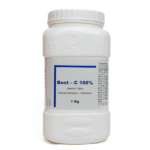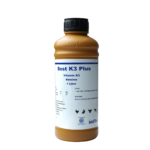The Impact of Climate Change on Animal Health: What You Need to Know
Climate change is one of the most pressing issues of our time, with far-reaching consequences for the environment, human health, and animal welfare. The livestock industry, particularly poultry and farm animals, is not immune to climate change. Rising temperatures, changing precipitation patterns, and increased frequency of extreme weather events are all taking a toll on animal health, productivity, and overall well-being. Follow us in a journey where we explore the key challenges, consequences, and potential solutions.
Rising Temperatures and Heat Stress
One of the most significant impacts of climate change on poultry and farm animals is heat stress. As temperatures rise, animals are subjected to increased heat loads, leading to heat stress, which can be fatal if not managed properly. Poultry, in particular, are highly susceptible to heat stress due to their high metabolic rate and inability to sweat. Heat stress can lead to decreased egg production, reduced growth rates, and increased mortality in poultry.
Farm animals, such as cattle and pigs, are also affected by heat stress, which can result in reduced fertility, decreased milk production, and increased susceptibility to disease. Heat stress can also lead to changes in behavior, such as reduced feed intake and increased water consumption, which can further exacerbate the problem.
Changes in Precipitation Patterns and Water Availability
These are another significant consequence of climate change for poultry and farm animals. Droughts and water scarcity can lead to reduced water quality, increased competition for water resources, and decreased feed quality. This can result in reduced animal productivity, increased mortality, and decreased fertility.
In addition, changes in precipitation patterns can lead to an increase in disease outbreaks, as animals are more likely to congregate around limited water sources, increasing the risk of disease transmission. Flooding, on the other hand, can lead to the spread of disease, as well as damage to infrastructure and loss of livestock.
Increased Disease Prevalence and Parasite Distribution
Climate change is also altering the distribution and prevalence of diseases affecting poultry and farm animals. Warmer temperatures and changing precipitation patterns are creating ideal conditions for the spread of diseases such as avian influenza, Newcastle disease, and African swine fever. Additionally, the changing climate is altering the distribution of parasites, such as ticks and mosquitoes, which can transmit diseases like tick-borne diseases and trypanosomiasis.
Impact on Feed Quality and Availability
Climate change is also affecting the quality and availability of feed for poultry and farm animals. Changes in temperature and precipitation patterns are altering the growth and yield of crops, leading to reduced feed quality and availability. This can result in reduced animal productivity, increased mortality, and decreased fertility.
Consequences for Animal Welfare and Human Health
The impact of climate change on poultry and farm animals has significant consequences for animal welfare and human health. Animal welfare is compromised when animals are subjected to heat stress, disease, and poor living conditions. This can lead to increased stress, suffering, and mortality.
Furthermore, the impact of climate change on animal health can have significant consequences for human health. The increased prevalence of zoonotic diseases, such as avian influenza and swine influenza, can pose a significant risk to human health. Additionally, the decreased productivity and availability of animal products can lead to food insecurity and economic instability.
Solutions and Mitigation Strategies
While the impact of climate change on poultry and farm animals is significant, there are several solutions and mitigation strategies that can be employed to reduce the risks. These include:
- Improved housing and ventilation systems: Providing animals with adequate housing and ventilation systems can help reduce heat stress and improve animal welfare.
- Disease surveillance and management: Implementing effective disease surveillance and management strategies can help reduce the prevalence of disease outbreaks.
- Climate-resilient breeds: Developing climate-resilient breeds that are better adapted to changing climate conditions can help improve animal productivity and welfare.
- Sustainable feed production: Promoting sustainable feed production practices can help reduce the environmental impact of feed production and improve feed quality.
- Climate-smart agriculture: Implementing climate-smart agriculture practices, such as agroforestry and conservation agriculture, can help reduce the environmental impact of it and improve animal productivity.
By implementing solutions and mitigation strategies, such as improved housing and ventilation systems, disease surveillance and management, climate-resilient breeds, sustainable feed production, and climate-smart agriculture, we can reduce the risks and improve the health and welfare of poultry and farm animals. It is essential that we act now to address climate change’s impact on animal health and ensure a sustainable and food-secure future.
References
Bronchodox: Effective Antibiotic Solution for CRD, Airsacculitis, and Respiratory Infections in Poultry
Bost-K3 Plus is a premium Vitamin K3 supplement designed for poultry, rabbits, and ruminants. It pre
Combatting Clostridia and Respiratory Infections with Biolinco
Bost-K3 Plus is a premium Vitamin K3 supplement designed for poultry, rabbits, and ruminants. It pre
The Impact of Veterinary Care on Farm Animals
Farm animals like poultry and livestock are vital to agriculture and food production. Behind the sce






